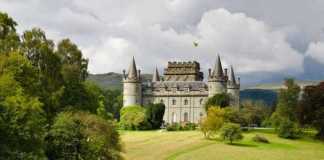Rich in cultural heritage, Spain’s traditions run deep with wild fiestas, flamenco shows, tapas and stunning architecture a great legacy of the past. From the snowy mountains of Andalucia and the Pyrenees to the crystal-clear waters and beaches of Ibiza and Mallorca, Spain’s diverse terrain shaped the culture and language of each region, and created wine and olive oil, known throughout the world. Spanish ingenuity in architecture led to the construction of incredible medieval castles like the Alhambra, and stunning cathedrals like the La Sagrada Familia, while Spanish artist Picasso pioneered the modern art movement.
In the fields of Spain, the mouth-watering paella was born, made from the freshest vegetables, rice and seafood. Spanish cuisine is diverse, with tasty dishes available in each region, presented in the form of tapas, typically including a slice of delicious cured ham. Just like when you reach the bottom of the paella pan, let’s dig a little deeper to find out more about what Spain is known for.
Contents
What Is Spain Known For?
1- Paella
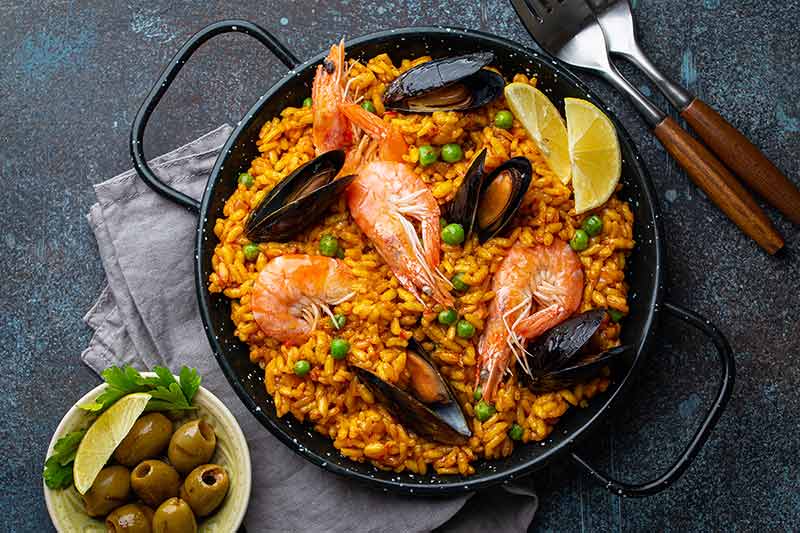
As the emblematic dish of Spanish culture, Paella captures all the best flavours of the country, combining the best vegetables, rice, and seafood in Europe.
Over many generations families have come together to enjoy this flavourful dish, tweaking it ever so slightly to align with their tastes.
Paella’s humble roots began in Valencia when farmers cooked the rice from the fields along with anything else found in the countryside such as tomatoes and onions over a fire.
Beans and chicken were added to enhance the flavour and texture of the dish, and on special occasions, a pinch of saffron to add extra colour and flavour.
Paella’s popularity spread throughout the country, and new variations arose, since Valencia and other large cities are near the sea, a seafood version of paella was created.
Although paella is Spain’s national dish, it goes beyond the country’s borders. In many Latin American, European, and North American countries, you can find paella on the menu.
Recommended tour: Barcelona: Paella Cooking Class with Sangria & Market Visit
2- Beautiful Beaches
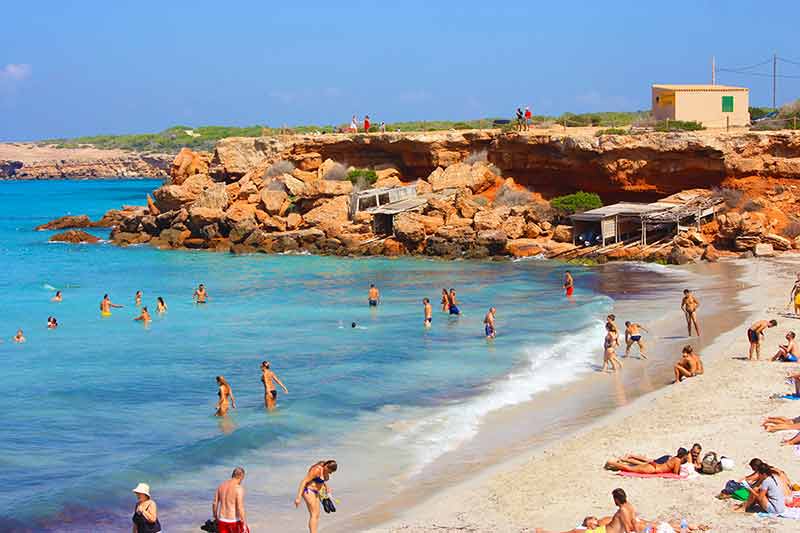
With long coastlines on the north and south, and islands in the Mediterranean and Atlantic, Spain’s pristine beaches are some of the best in the world, and in the warmer months, millions of people head to the country to soak up the sun, swim and surf.
Many travellers head the Mediterranean, or in the Balearic Islands during the summer for the golden sand and clear turquoise waters.
In the colder months, sun chasers tend to head south in Andalucia, or the Canary Islands, where the sand and sea are a bit darker, and the winter temperatures are mild.
The northern coastline of Spain on the Atlantic offers more natural scenery, with forested hills and winding grassy trails leading down the beach.
On the coastline of Girona, and in the Balearics, you can swim in ‘calas’ or small coves beaches flanked by rocky cliffs.
3- Languages

Spanish is the official language of Spain and is spoken by all citizens, but several autonomous communities in the country have their own official languages as well.
Catalan is widely spoken throughout Catalonia, however, there are different variants of Catalan spoken in other areas outside the province.
Valencian, Balearic, north-western, central, northern or Roussillon, are all spoken in their respective areas, and Alghero Catalan is spoken in Sardinia, Italy.
In Galicia, Galician is spoken, and in Basque Country and part of Navarre, Basque (Euskara) is the most unique language in the country.
In addition to the official secondary languages used in Spain, Spanish itself has dialects.
Castillian Spanish or Peninsular Spanish refers to a dialect spoken in northern and central Spain, and it’s the most proper form of Spanish, compared to Andalusican Spanish found in the south.
The term Castilian Spanish is also used to identify Spanish spoken in Spain, which is slightly different from the Spanish spoken in Latin American countries.
4- Bullfighting
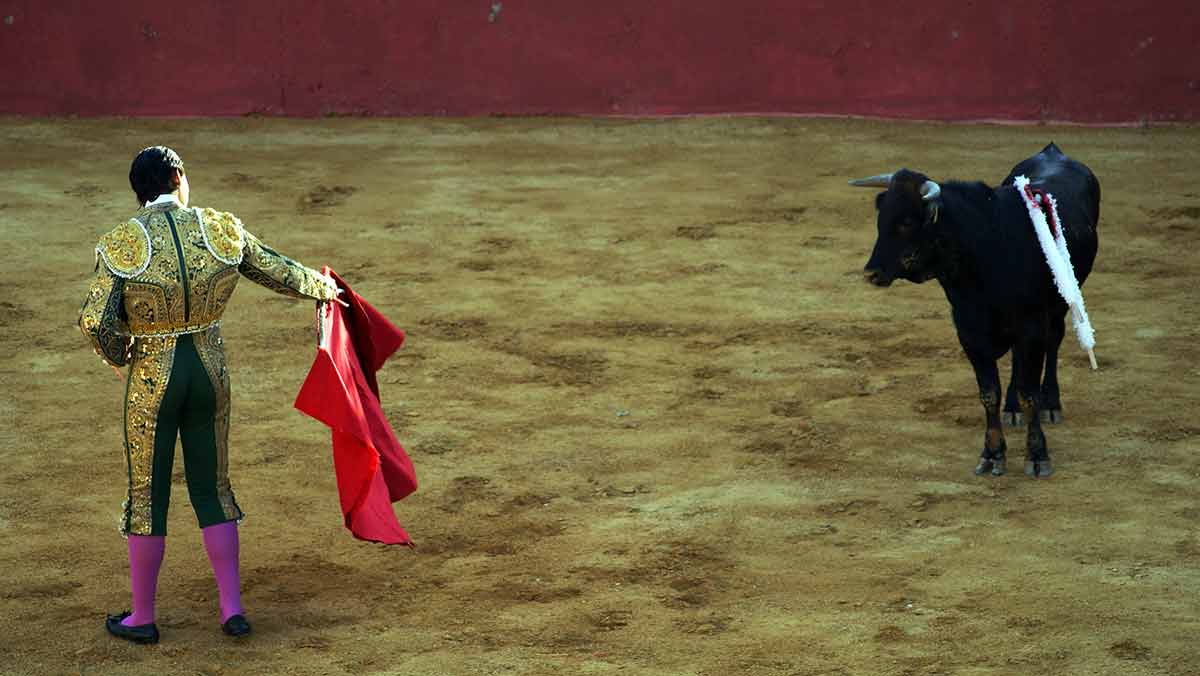
Steeped in pageantry and ritual, bullfighting celebrates the cultural heritage of Spain, with symbols of bravery, skill and artistry.
Its earliest roots go back to Mesopotamia when bulls were worshipped and sacrificed.
During Roman times, bulls were pitted against men, in a dance to the death. As Roman rule spread across the Iberian peninsula, so did the ritual.
The first official bullfight in Spain was held in 711 A.D., in honour of the coronation of King Alfonso VIII.
During these times, the bulls were defeated by matadors on horseback.
The modern version of bullfighting arose in the country in 1726, when a famous matador from Ronda, Francisco Romero, used a sword and red cape to defeat the bull.
Centuries later, widespread controversy about the mistreatment of animals arose, leading to the Catalan government banning bullfights in the region in 2012.
Four years later, the ban was overturned by the Spanish government, but no events in the region have occurred since.
Bullfighting events still take place in many other areas of the country to this day.
Recommended tours:
- Seville: Bullring Guided Tour & Skip-the-Line Ticket
- Visit to Alicante Bullring and Bullfighting Museum
5- Flamenco
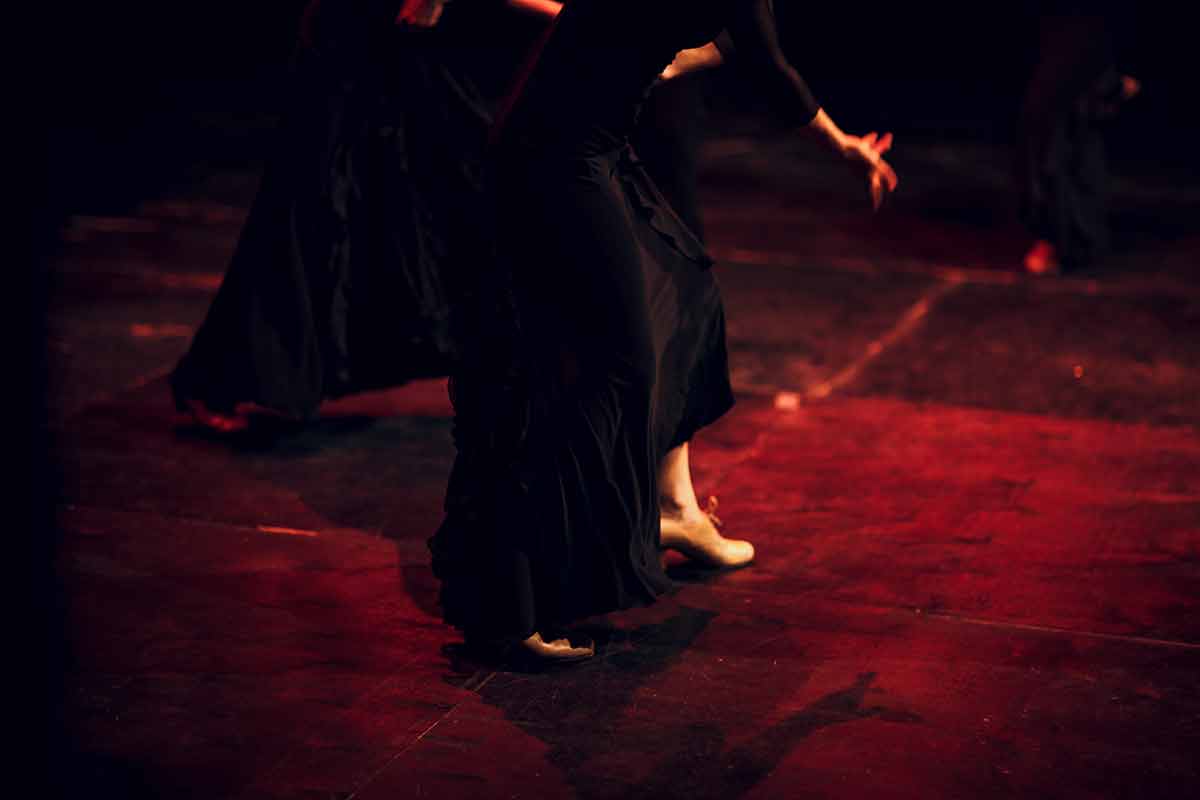
Full of fiery passion and intense rhythmic clapping and dancing, flamenco shows feature music bursting at the seams with emotion, while telling dramatic stories about life as an outcast in the old days of white Christian Spain.
Flamenco’s roots originated in the Sacromonte caves of Granada when the Romani (Gypsy), Moorish, Andalusian and Jewish cultures intermingled after the reconquest of the Iberian peninsula by the Spanish.
In the evening, their primitive dwellings were transformed into improvised stages for live performances, with spectators shouting Olé! in appreciation.
As the dancers stomp and spin wearing traditional red ruffled dresses, their strong facial expressions evoke heavy emotion throughout the audience.
Over 50 styles of Flamenco exist, each with its own unique set of rhythmic beats.
Shows are held all across the country, with grand performances taking place in Seville, Madrid, and Cordoba.
Recommended shows:
- Seville: Live Flamenco Dancing Show Ticket at the Theater
- Seville: Flamenco Show with Drink at Tablao La Cantaora
You may also be interested in:
- What is Turkey known for?
- What is Portugal known for?
- What is Greece known for?
- What is France known for?
- What is Belgium known for?
- What is Switzerland known for?
- What is Poland known for?
- What is Australia known for?
- What is Mexico known for?
- What is Germany known for?
- What is Croatia known for?
- What is Hungary known for?
- What Is Romania known for?
- What is The Netherlands known for?
- What is Scotland known for?
- What is Canada known for?
- What is Japan known for?
- What is China known for?
- What is Singapore known for?
- What is Vietnam known for?
- What is Thailand known for?
- What is Cuba known for?
- What is Argentina known for?
- What is Colombia known for?
- What is Spain known for?
- What is Italy known for?
- What is Ireland known for?
- What is Oregon known for?
- What is Colorado known for?
- What is Tennessee known for?
- What is Hawaii known for?
- What is Alabama known for?
- What is Illinois known for?
- What is Mississippi known for?
- What is Nevada known for?
- What is Maine known for?
- What is Idaho known for?
- What is Delaware known for?
- What is Maryland known for?
- What is Wisconsin known for?
- What is Miami known for?
- What is Virginia known for?
- What is West Virginia known for?
- What is Massachusetts known for?
- What is Boston known for?
- What is Florida known for?
- What is Kentucky known for?
- What is Indiana known for?
- What is Montana known for?
- What is Nebraska known for?
- What is Pennsylvania known for?
- What is Vermont known for?
- What is Arizona known for?
- What is California known for?
- What is South Carolina known for?
- What is North Carolina known for?
- What is Texas known for?
- What is Michigan known for?
- What is Ohio known for?
- What is Louisiana known for?
- What is Oklahoma known for?
- What is New York known for?
- What is Georgia known for?
- What is Utah known for?
- What is Connecticut known for?
- What is Rhode Island known for?
- What is Iowa known for?
- What Is Minnesota known for?
- What is New Hampshire known for?
- What is Arkansas known for?
- What is New Jersey known for?
- What is Missouri known for?
- What is North Dakota known for?
- What is South Dakota known for?
- What is Wyoming known for?
- What is Alaska known for?
- What is Washington known for?
- What is Seattle known for?
- What is New Mexico known for?
- What is Kansas known for?
- What is San Francisco known for?
- What is Chicago known for?
- What is Denmark known for?
- What is Norway known for?
- What is Sweden known for?
6- Tapas
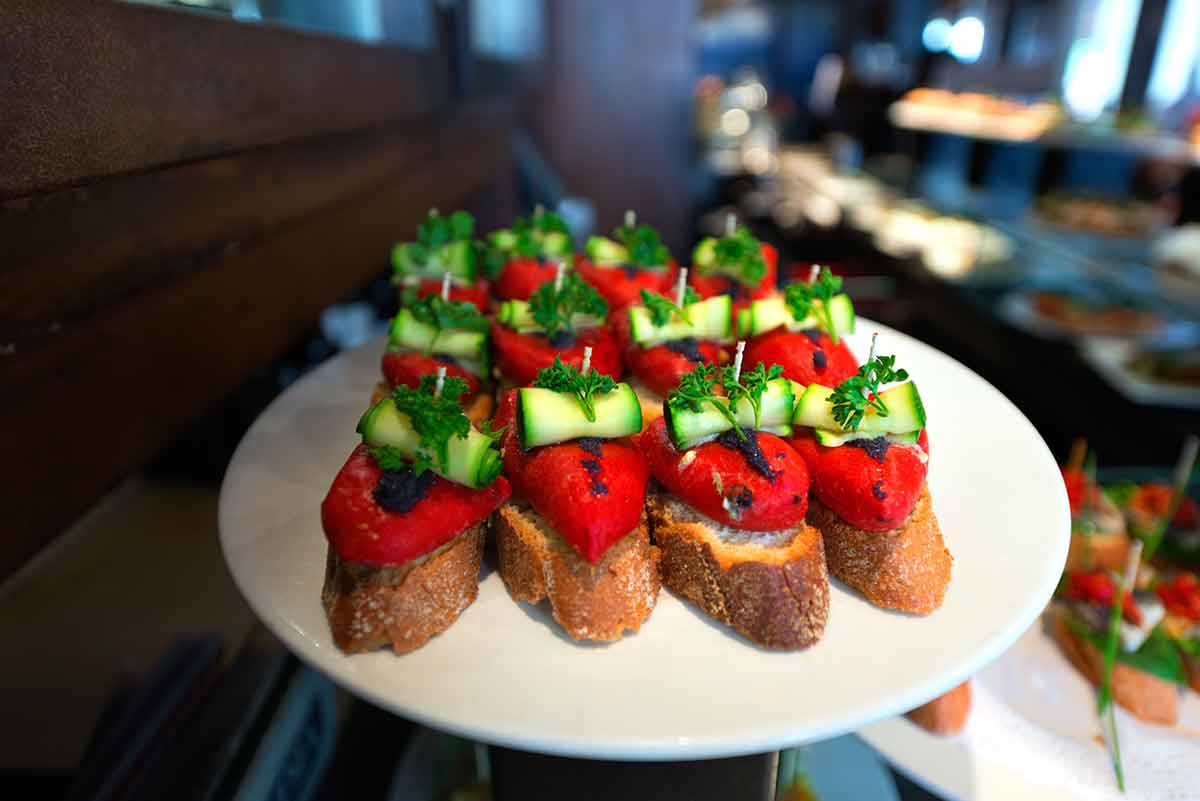
Every region of Spain boasts about their delicious local cuisine, but they can all agree on one thing, that the deep-rooted tradition of tapas is the best way to showcase all those extraordinary flavours from around the country.
Some believe the tapas originated in the 13th century when King Alfonso X drank wine and ate small dishes between meals to recover from an illness.
Soon after, he ordered that all inns serving wine must provide a small portion of food or ‘tapa’ along with drinks.
Nowadays, nearly every restaurant and cafe in Spain still offers this hallmark snack when you sit down to grab a drink.
The tradition goes beyond just tasting some delicious olives, fried squid, chorizo, meatballs or potatoes.
It’s a great way for families and friends to socialise between meals.
7- San Fermin (Running of the Bulls)
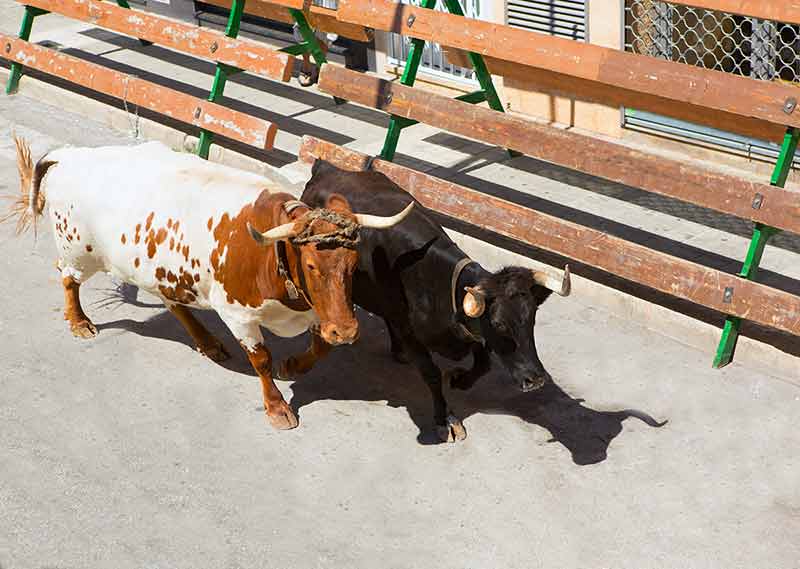
Every year in July, Pamplona celebrates San Fermin, a fiesta in honour of the city’s first bishop and a patron saint who was beheaded in 303 A.D.
Over eight days, runners typically dressed in white with red handkerchiefs, test their bravery and courage by running in front of six angry bulls as they make their way hurriedly through the narrow streets of the city.
Dating back to the 13th century, bull running began when cattle herders decided the easiest way to transport the animals from the corrals to Plaza de Toro was through the city streets.
The locals would gather at the intersections and drive the animals onward by shouting and striking them with sticks.
Over one million people from around the world come to Pamplona each year to witness the wild events immortalised in Hemmingway’s book ‘The Sun Also Rises’.
The party rages day and night during the fiesta, and during the bull runs, onlookers gasp while dozens of people are gored or trampled, sometimes to death.
8- La Sagrada Familia
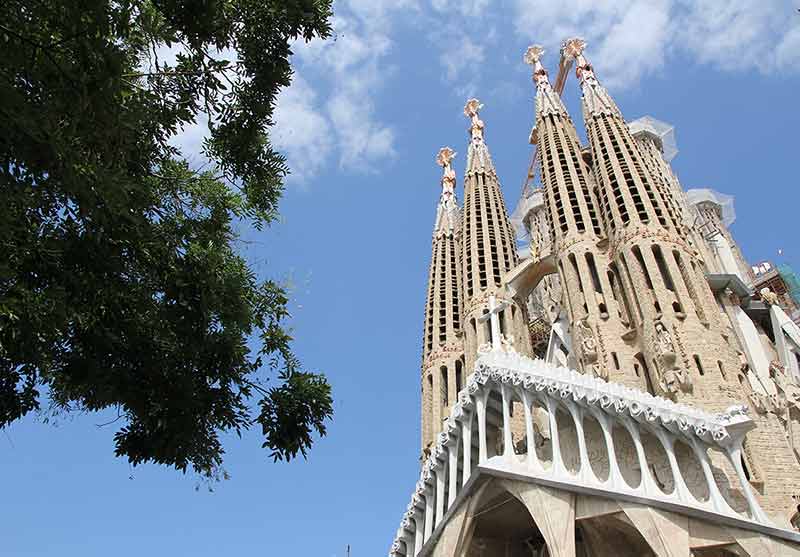
In almost every corner of Barcelona, you can find one of Antonio Gaudi’s spectacular architectural designs, and his legacy lives on as they continue to build his grand masterpiece, La Sagrada Familia.
Construction of the cathedral began in 1882, and it’s scheduled to be completed in 2026, exactly 100 years after Gaudi’s death.
La Sagrada Familia or ‘the holy family’ church was designed to honor Jesus and his family.
The extremely tall towers extend high above the city skyline, and represent him, his mother, the four evangelists, and the twelve apostles.
The elaborate facades are meant to integrate religion and nature harmoniously, with the nativity scene over the temple being the most remarkable exterior feature.
The interior designs are equally impressive, with massive columns allowing light to flood through the tall stained glass windows, creating vibrant colours throughout the nave.
They connect delicately to the ceiling, like tree branches extending outward, forming complex geometric shapes. Skip the lines and book your tickets here.
9- Alhambra
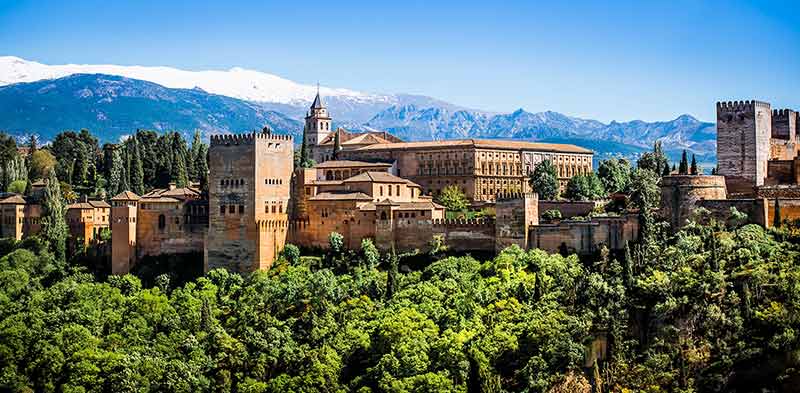
As the prized gem of Andulcia, the Alhambra not only houses the best preserved royal palace in Spain under Moorish rule, but it also tells the story of the region’s turbulent past and the reconquest in 1492.
Built upon ancient Roman battlements, the walls of the Alhambra began to take shape after the first Muslim army invaded Spain.
Over several hundred years, successive Muslim dynasties battled for control of the region, and in the early 13th century, the Nasrid rulers began the construction of the Alhambra we see today.
As a symbol of power over Grenada, the Nasrids constructed a fortress with enormous imposing walls to house military defences, mosques, royal courts and gardens.
Inside the palace, you can still see the intricate Islamic designs crafted from plaster and wood, one of the finest examples of these techniques.
Reconquest by the Catholic Monarchs Ferdinand and Isabella brought an end to the Islamic rule in Spain, and the construction of the Charles V. Palace, adding Renaissance style to the Alhambra. Skip the lines and book your tickets here.
10- Wine and Sangria
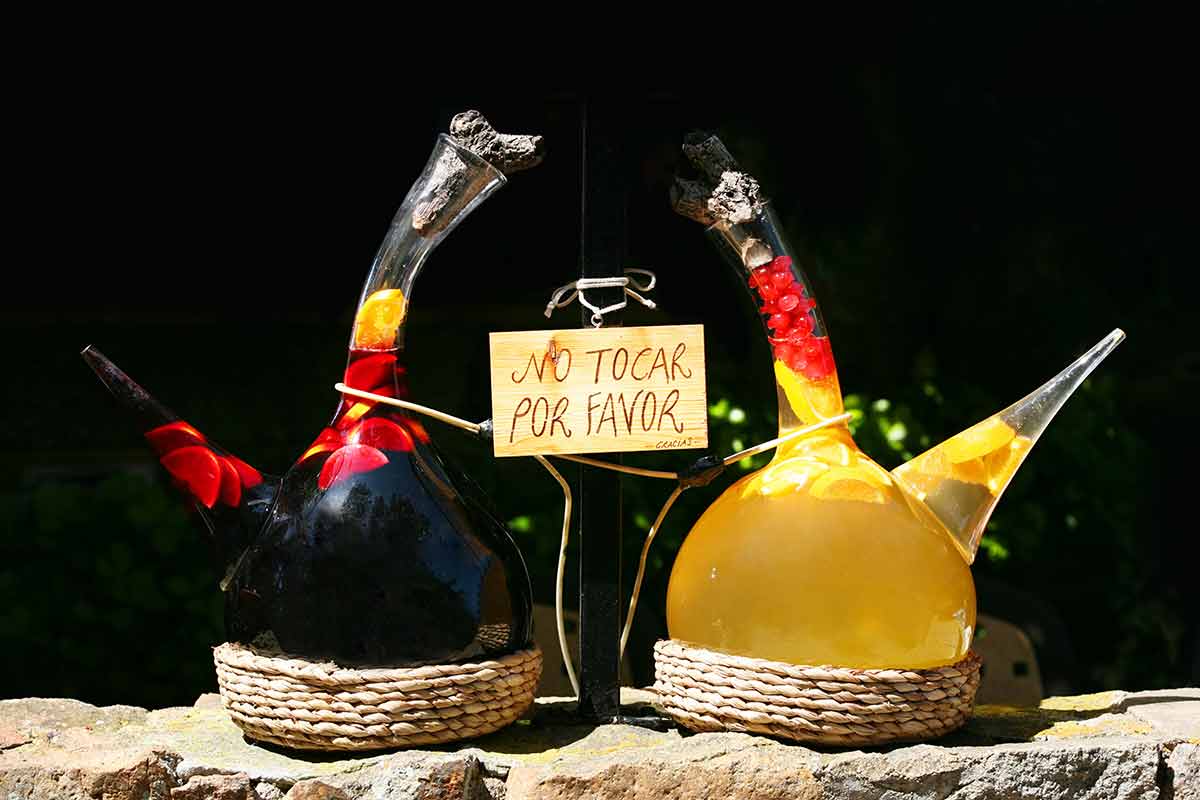
As the number one exporter of wines in the world and with more vineyards than any other country in the world, Spain’s reputation for producing great wines at affordable prices goes well beyond the European borders.
The diverse terrain and range of climate types in Spain allow winegrowers to produce several distinct types, each rich with flavour.
At higher altitudes, the temperature drops, allowing for a longer ripening season and creating more balanced wines with a fresher taste.
Named for the region where it is grown, Rioja tops the list as the most popular red wine, followed closely by Priorat, Tempranillo, and Ribera del Duero.
But let’s not forget about the white wines from northern Spain, like cava and sherry which are popular worldwide too.
When the summer heat arrives, the people of Spain mix red wines such as Garnacha along with fruit, orange juice and brandy to create a more refreshing drink, Sangria.
11- Ibiza
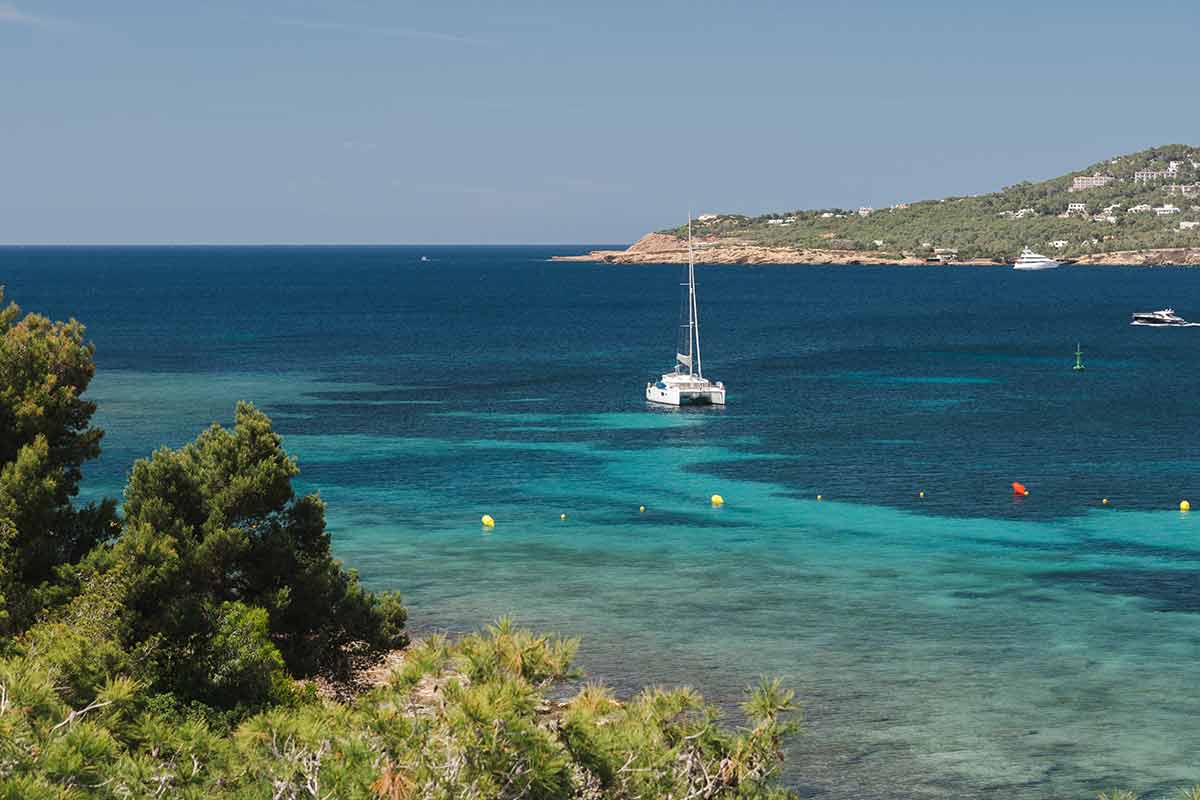
During the summertime, Spain’s Balearic Islands become a hotspot for Europeans looking to soak up the sun and swim in the turquoise waters of the Mediterranean.
But for those seeking vibrant nightlife, Ibiza is the first choice.
With raging nightclubs that stay open until the early hours of the morning blasting live music, the island is a party-goers’ paradise, even for international celebrities.
But Ibiza is more than just an escape for late-night fun.
The island contains some of the best beaches in the country, coastal hikes, and a charming old town with fantastic views of the sea.
In the west of the island, you can watch the sunset in Sant Antoni de Portmany, or explore the hippy markets in the east of the island, near Santa Eulalia.
Whether you’re ready to party, or just relax with family and friends, Ibiza caters to all types of holidaymakers.
Recommended tours:
- Ibiza: All-Inclusive Boat Trip to Formentera
- Ibiza: Snorkeling and SUP Paddle, Beach and Cave Cruise
- Ibiza: Jeep Safari Island Exploration
12- Picasso
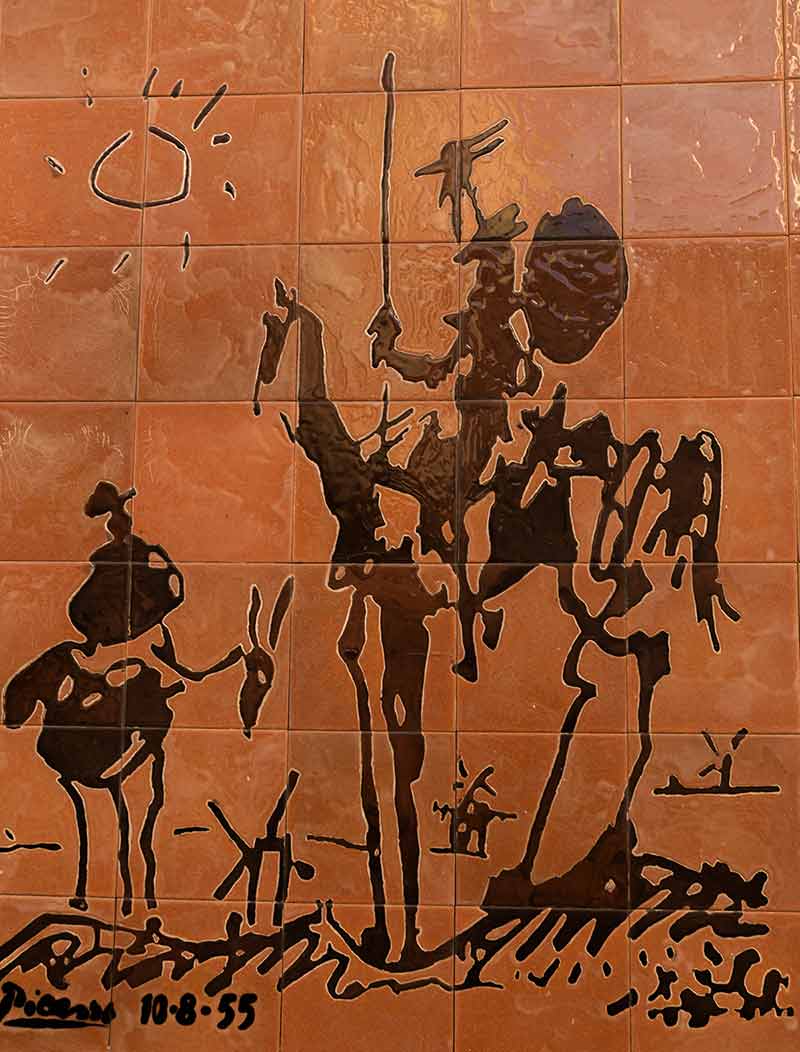
Arguably the most influential figure in modern art, and one of Spain’s greatest artists, Pablo Picasso is considered a genius by many, for constantly reinventing his style during his lifelong career.
Born in Malaga, Spain in 1881, Picasso was led into the world of art by his father, a professor of drawing.
At age thirteen, a piece in his first exhibit won national acclaim, but shortly later he decided to drop out of art school to experiment full-time with modern art.
Arriving in Paris in 1900, he was given an exhibition a year later at one of the most prestigious art galleries.
In 1909, along with his co-founder Georges Barque, he pioneered Cubism, invented constructed sculpture, and several other new artistic techniques including collage.
Picasso created more than 50,000 paintings, drawings, sculptures, ceramics, and engravings during his 80-year career.
His most famous painting ‘Guernica’, represented the suffering caused by German plane bombings during the Spanish Civil War.
Museo Picasso Málaga is an excellent museum dedicated to the artist.
13- La Tomatina
Many of Spain’s fiestas are known for being wild and bizarre, but La Tomatina takes the cake, or in this case the tomato!
Every year at the end of August, over 40,000 people flood the streets of the small Valencian town of Buñol, ready to paint the town red during the world’s largest food fight.
Dating back to 1945, the fiesta begins with a Spanish ham hanging from a greased pole in the town’s square in the morning.
Eager participants attempt to climb the pole, hoping to claim the delicious prize and the admiration of the crowd.
At 11 am, a firework explodes triggering the world’s biggest food fight.
For one hour, chaos ensues, as 150,000 kg of tomatoes are hurled in every direction throughout the crowd, covering the participants from head to toe in a messy red slush.
14- Jamón (Spanish Cured Ham)
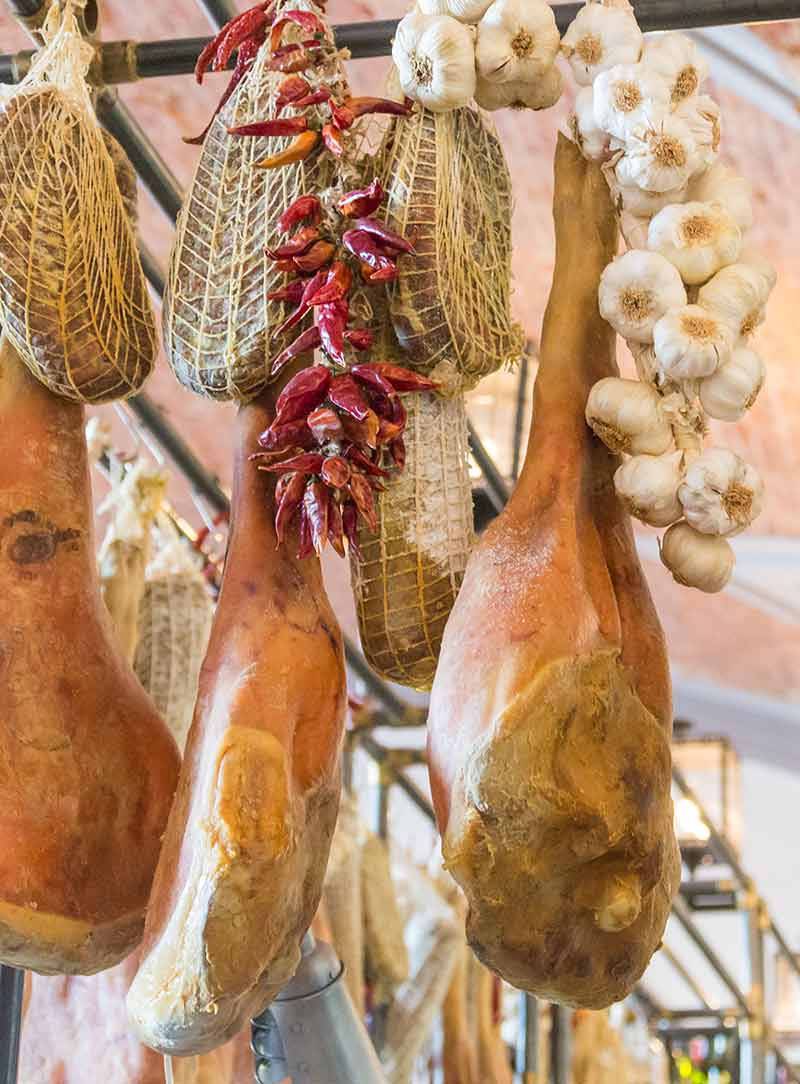
Spain’s olive oil and wine are world famous, but there is nothing more exquisite than Spanish cured ham known as Jamón.
The tradition of making cured ham dates back to over 2,000 years ago when the Romans ruled the Iberian Peninsula.
For centuries, cured ham legs were reserved for only royalty and clergy.
Later in the 13th century, it became commonplace in Spanish households and nowadays it’s an integral part of many Spanish tapas.
Spanish cured ham comes in two varieties, Jamón Serrano which comes from white pigs, and Jamón Ibérico which comes from the meat of true Iberian pigs with black hooves.
Jamón Ibérico de Bellota is the most expensive cured ham because of its distinct flavour and quality, with the most expensive legs being sold for an impressive 4,100 euros!
These free-range pigs wander the forests in western Spain, eating sweet acorns on the ground as they go, giving the Jamón its unique taste.
Recommended tour: La Rioja: Jamon Iberico Farm Tour and Tasting with Wine
15- Siestas
After a large lunch, the Spanish settle down in their favourite cosy spots for a short nap between 2 and 5 pm.
Even some stores and businesses close so the workers can go home to relax during a siesta.
The word siesta comes from the word hora sexta, or ‘sixth hour’ in Spanish, meaning the 6th hour of the day after sunrise.
This old-world tradition comes from agricultural times when farmers would take time to escape the scorching heat of the midday sun, eat and nap for a little while.
Afterwards, they would return to the fields to work until sunset but in modern times, not everyone in Spain takes a siesta.
With the advent of air conditioning and people having to travel greater distances to get to work, it became less common.
Nowadays, it’s mostly retired people and younger children who get to catch some z’s in the middle of the day.
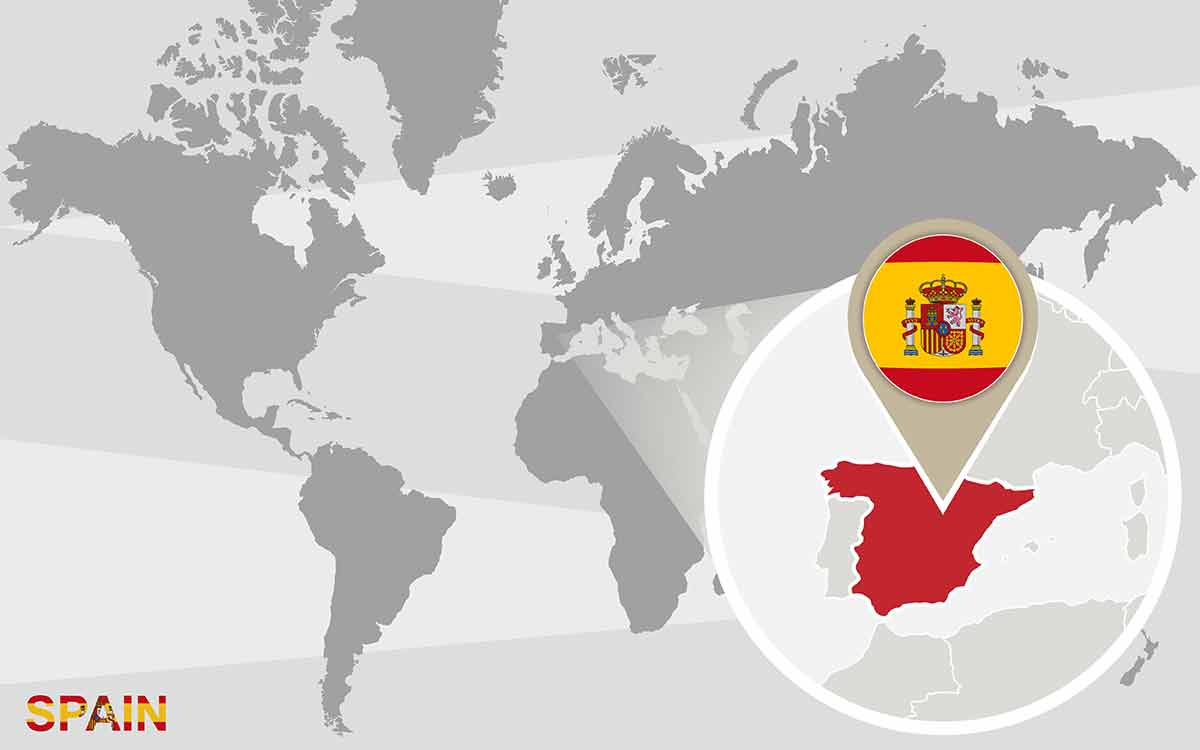
Love Spain? Read these posts:
- 27 Spanish Shows On Netflix
- 20 Fairytale Castles In Spain
- 30 Landmarks in Spain
- 20 Places To Visit In Spain In Winter
- 20 Best Beaches In Spain
- An Amazing Andalusia Road Trip
- 20 Things To Do In Ibiza
- 20 Things To Do In Tenerife
- 21 Things To Do In Lanzarote
- 21 Spanish Drinks To Try
- 20 Things To Do In Madrid At Night
- 20 Day Trips From Madrid
- Best Time To Visit Spain
- 20 Cities in Spain
- Renting A Car In Barcelona
- 20 Things To Do In Seville
- 20 Things To Do In Granada
- 20 Things To Do In Zaragoza
- 20 Things To Do In Palma
- 20 Tours In Spain
- 20 Things To Do In Alicante
- 20 Spanish Food / Dishes
- 20 Things To Do In Ronda
- 20 Things To Do In Cadiz
- 20 Thing To Do In Benalmadena
- 20 Things To Do In Torremolinos
- 20 Landmarks In Barcelona
- 5 Day Trips From Barcelona
- Barcelona Bike Tour
- 10 Things To Do In Bilbao
- 12 Things To Do In San Sebastian
- 10 Things To Do In Oviedo
- Storybook Village of Santillana del Mar
- 20 Things To Do In Gran Canaria
- 20 Things To Do In Barcelona At Night
- Christmas in Spain
- 20 Things To Do In Malaga
- 20 Things To Do In Marbella
- 20 Things To Do In Valencia
- Where To Stay In Valencia
- Ibiza At Night
- 20 Things To Do In Ibiza
- 20 Things To Do In Toledo
- Where To Stay in Barcelona
- 20 Things To Do In Segovia
- Where To Stay in Tenerife
- Where To Stay in Madrid
- Where To Stay In Mallorca
- Where To Stay In Ibiza
- 15 Things Spain Is Famous For
- 5-day Barcelona Itinerary
Plan Your Trip

Rent A Car – Find the best car rental rates at Discover Cars. They compare car hire companies to provide you with the best deal right now.

Find A Hotel – If you’re curious about this article and are looking for somewhere to stay, take a look at these amazing hotels.
